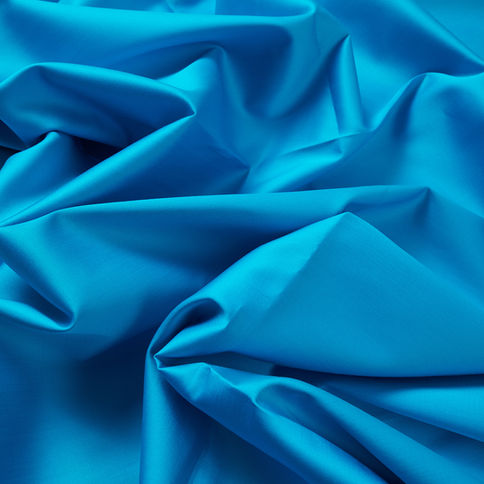



Satin
Satin is characterized by its soft, lustrous surface and a contrasting harsh underside. Its feel, look and drape vary depending on its composition—including cotton and polyester satin.
It is commonly used in blouses, formal wear, dresses, night gowns and pajamas.
Weave
Satin
Blend
Cotton or Polyester
Weight
120-150 gsm
Certificate
BCI Cotton
Satin Fabric Properties
- Feels great against the skin
- Highly sophisticated when made with the right blend
- Great to work with when creating flowing silhouettes
- Holds dyes well
- Light in weight
- Delicate
What is satin?
Satin, a fabric celebrated for its opulent look and smooth touch, has a rich history stretching back to medieval China, where it was originally crafted from silk. Over the centuries, satin’s composition has broadened to include various materials like polyester, acetate, nylon, and their mixtures.
It’s known for its own weaving technique, which yields a highly lustrous, smooth, and gleaming surface. The third basic weave, satin weave, positions most fibers on the fabric's exterior, giving it the distinctive luster.
While silk satin carries historical reverence, contemporary versions such as cotton satin and polyester satin fabrics offer a similar appearance and good quality at a lower cost. Polyester satin is appealing to a wider audience, allowing it to be used for numerous daily wear products.
Satin material in different uses
- Evening gowns and formal wear
- Dresses, skirts and blouses
- Lingerie and sleepwear
- Accessories like ties and bows
Care Instructions
Hand wash or machine wash on a delicate cycle in cold water.
Tumble dry on low heat or air dry.
Avoid bleach and fabric softeners to preserve shine.